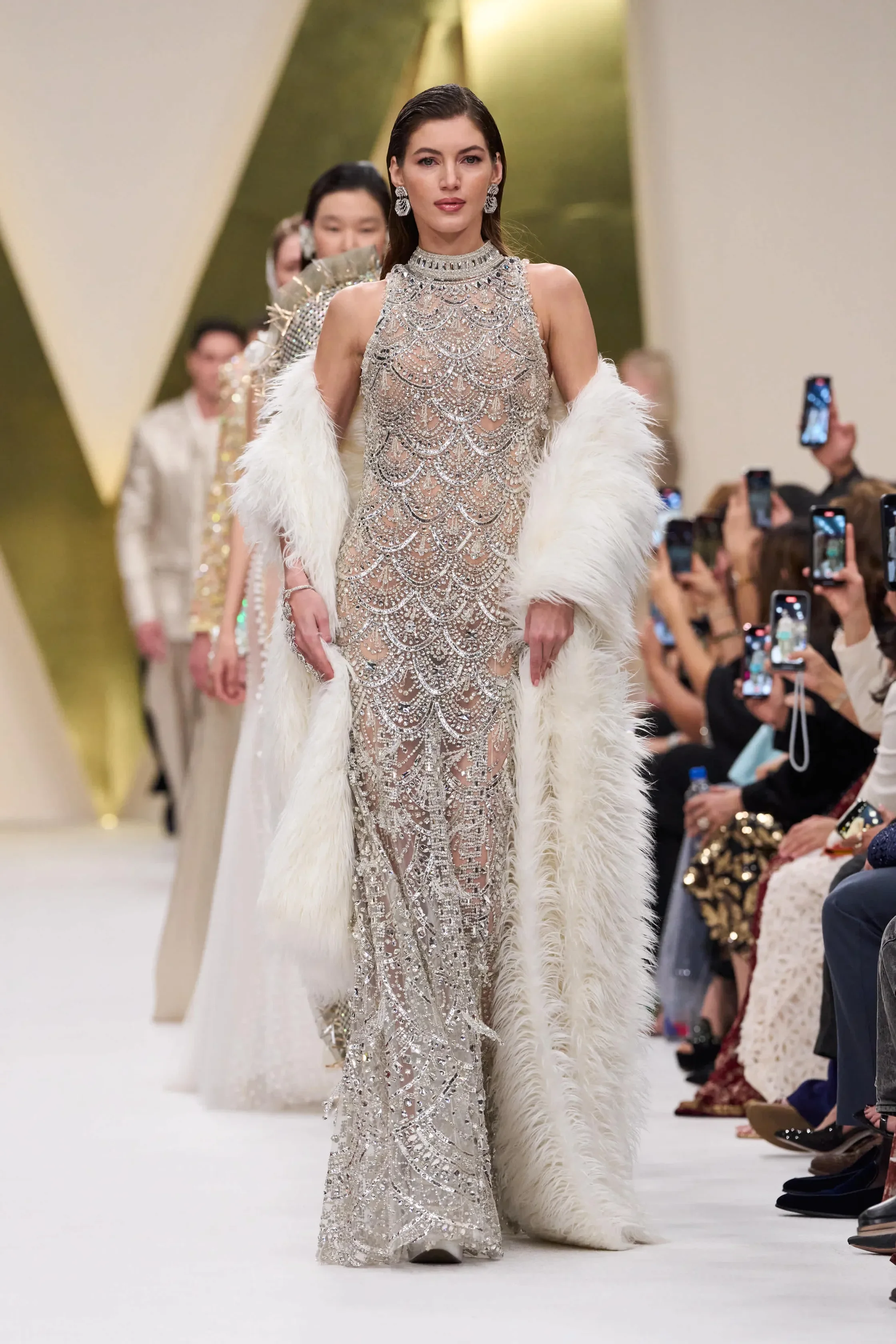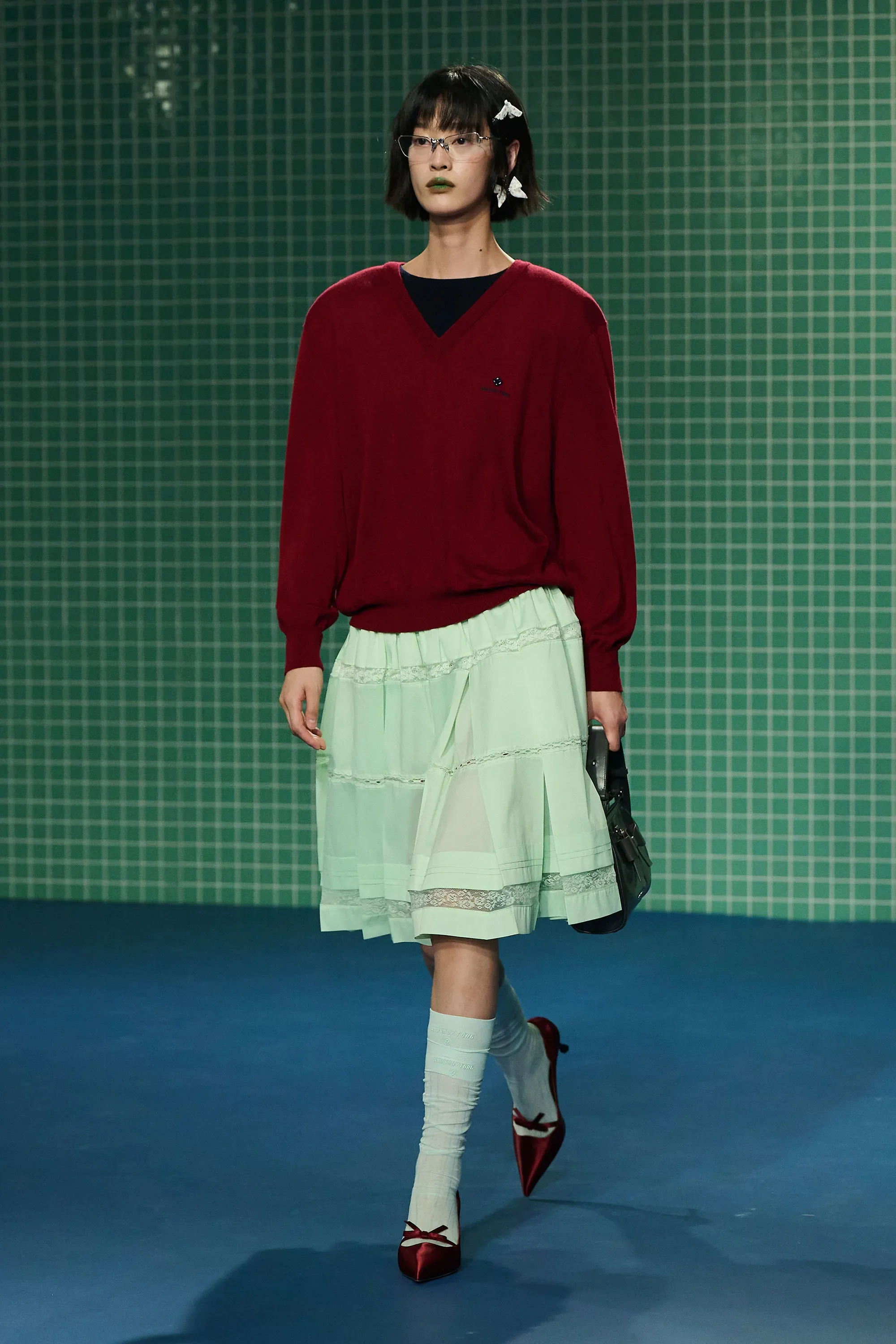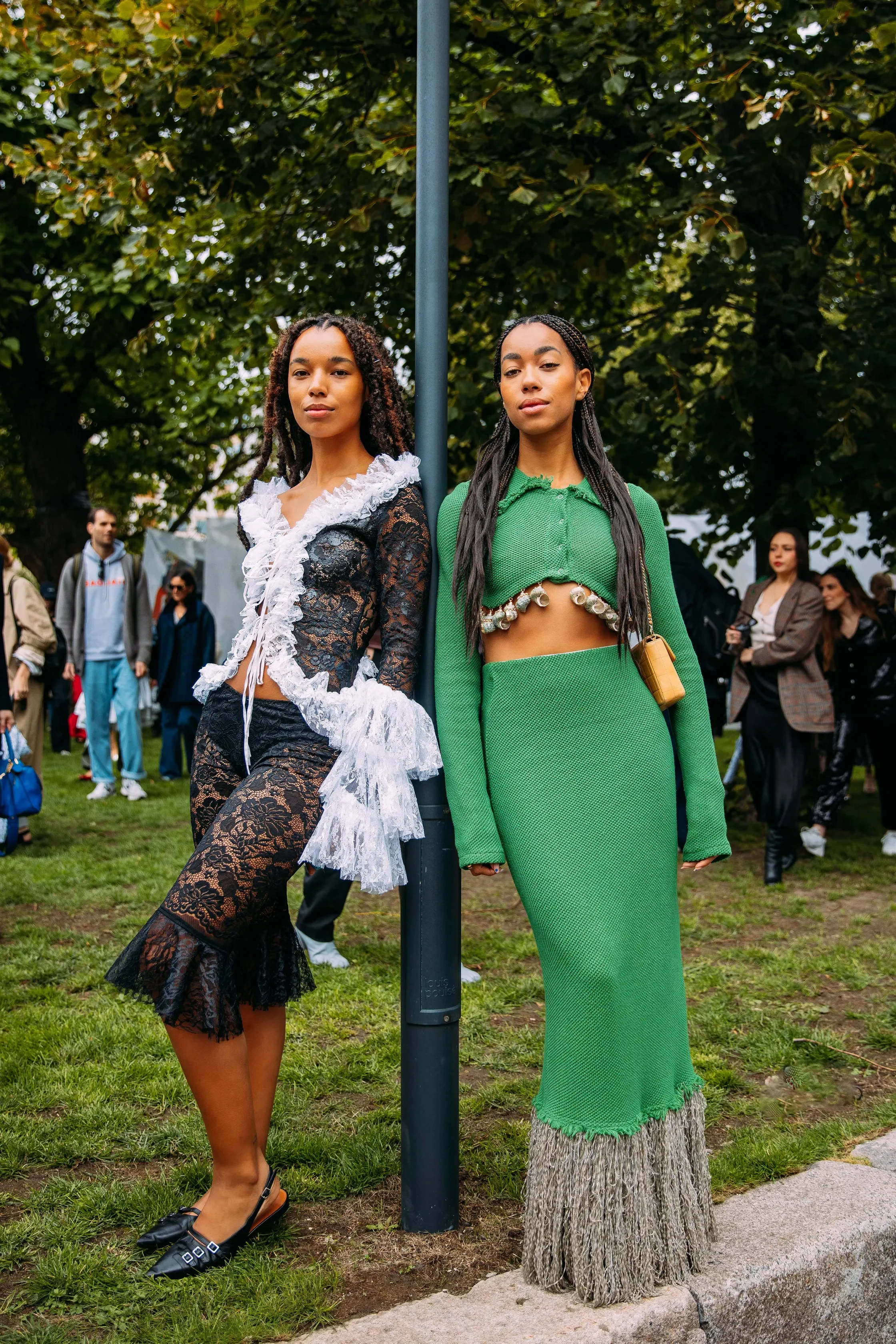Local Cool: How 5 Cities Are Redefining Global Fashion
The Death of the One‑Size‑Fits‑All Fashion Playbook
Fashion used to be dictated by four cities. Now, it’s being redefined by five—and none of them are who you’d expect.
For decades, the industry’s cultural axis spun around a familiar quartet: London, Paris, Milan, and New York. These cities shaped the aesthetics, taste, and codes of aspiration. But the luxury landscape has changed—and fast. Today, relevance is no longer dictated from traditional fashion capitals. It’s being rewritten in real time by a new class of cultural powerhouses: Lagos, Seoul, Dubai, Shanghai, and Copenhagen.
Each of these cities brings its own rhythm, its own style codes, and its own subcultural gravity. They’re not “emerging markets”—they’re already epicentres of cultural innovation, setting the tone for what luxury looks and feels like to a new generation of global consumers.
From the soft power of K-pop to the bold vibrancy of Lagosian streetwear, from Dubai’s digital excess to Copenhagen’s minimalist ethos—luxury is being redefined by identity, not geography.
Welcome to the era of Local Cool—where cultural capital is built block by block, beat by beat, city by city.
Why Local Cool Matters
Cultural capital has always been an important part of luxury fashion, even in the days when brands prioritised craftsmanship and exclusivity. But today, that capital isn’t concentrated in the hands of a few fashion capitals—it’s fragmented, hyper-local, and constantly evolving. This shift is being driven by a new generation of consumers who don’t just want luxury fashion—they want it to speak their language.
Enter the era of local cool: where authenticity is born from community, not campaigns. Where the value of a product isn’t just in the materials, but in how well it resonates with a regional aesthetic, a cultural code, or a movement bubbling just under the mainstream. Whether it’s a Lagosian streetwear label that reflects post-colonial pride or a Shanghai-based techwear brand embedded in digital futurism, luxury’s next big moments are coming from unexpected places.
Global brands that rely on one-size-fits-all storytelling are finding themselves out of sync. Meanwhile, those who tap into local energy—collaborating with homegrown designers, amplifying regional voices, and adapting their narratives—are building relevance that money alone can’t buy.
“Local cool” isn’t about shrinking your vision. It’s about expanding your cultural fluency.
Lagos: Bold Expression Meets Global Momentum
Street Style from Lagos Fashion Week, Spring/Summer 2024, Vogue
Lagos isn’t just rising—it’s reshaping the global style code from the ground up. As Nigeria’s creative capital, Lagos sits at the intersection of rhythm, rebellion, and reinvention. It’s a city where music, fashion, art, and storytelling collide—and what emerges is as bold as it is influential.
The cultural energy here is kinetic. With the global ascent of Afrobeats, Nollywood, and Lagos Fashion Week, the city has become a creative epicentre, exporting far more than entertainment (Vogue Business, 2024). It’s exporting attitude. A new kind of luxury—defined by identity, expression, and unapologetic visibility.
In Lagos, boldness isn’t a trend—it’s the aesthetic standard. Colour, silhouette, and storytelling are amplified, not muted. Designers like Mowalola and Orange Culture are leading the charge, infusing global fashion with Nigerian heritage, queerness, and postcolonial commentary (Business of Fashion, 2023). These aren’t brands chasing trends—they’re building cultural ecosystems.
And yet, despite its creative gravity, Lagos remains underleveraged by the global luxury sector. While its influence can be seen on runways and mood boards, genuine investment from heritage brands is still rare. The opportunity? Massive.
For brands looking to be future-proof, Lagos offers more than just a new market—it offers a new mindset. One rooted in storytelling, subversion, and cultural pride. But tapping into this world requires more than a capsule collection or influencer campaign. It demands long-term creative collaboration—and a willingness to co-create rather than colonise.
Lagos isn’t a trend to borrow from. It’s a force to build with. And those who understand that now will be the ones shaping what luxury looks like tomorrow.
Seoul: Hyper-Modern Cool Meets Cultural Mastery
Street Style from Seoul Fashion Week Spring/Summer 2025, Vogue Singapore
Seoul isn’t following fashion anymore—it’s setting the global rhythm. From K-pop to K-beauty, Korean culture has become a dominant force in shaping what’s cool, aspirational, and marketable (Harvard Business Review, 2024). But Seoul’s influence on luxury goes far deeper than viral trends—it’s a cultural masterclass in precision, identity, and innovation.
Korean consumers—particularly Gen Z and millennials—aren’t passive audiences. They’re tastemakers, curators, and community builders. In Seoul, luxury isn’t about owning a name. It’s about how you style, remix, and personalise that name to express individuality. Streetwear and high fashion aren’t opposites—they coexist, often within a single outfit. And symbolism, craftsmanship, and styling choices carry meaning beyond aesthetics.
Brands like Ader Error, Wooyoungmi, and Gentle Monster are exporting this hybrid ethos globally (Vogue Business, 2023). Their success lies in Seoul’s ability to blend heritage with hyper-modernity—mixing pop culture, experimental design, and social codes with surgical precision.
Then there’s the K-pop effect. Figures like Stray Kids, NewJeans, and G-Dragon aren’t just brand ambassadors—they’re cultural operators who move product, perception, and global sentiment (Vogue Business, 2024). When they endorse a brand, it’s not about promotion—it’s about cultural integration.
For global luxury fashion houses, tapping into Seoul means more than casting a Korean face. It means understanding the style codes, social nuances, and cultural subtleties that shape desirability here. The payoff? Deep brand loyalty and influence that echoes far beyond Korea.
In Seoul, luxury fashion doesn’t just reflect culture—it amplifies it. And the brands that thrive are the ones that listen first, localise with intent, and co-create with Seoul’s creative leaders—not just borrow their shine.
Dubai: Digital Luxury in a Desert of Excess
Manish Malhotra designs, Dubai Fashion Week Autumn/Winter 2025, Vogue Arabia
Dubai doesn’t just consume luxury—it orchestrates it. The city is synonymous with grandeur, but its luxury market is evolving far beyond opulence for opulence’s sake. Beneath the skyline of supercars and skyscrapers lies a hyper-connected, experience-driven youth culture reshaping what status looks like in the Gulf.
Home to one of the youngest, most international populations in the world (Istituto Marangoni, 2025), Dubai has become a sandbox for luxury innovation. From Web3 art fairs and NFT fashion to immersive pop-ups and AI-driven styling, the city is embracing digital-first experiences at a scale few others can match (Fast Company Middle East, 2022). Here, retail is theatre, and the audience expects both spectacle and substance.
But don’t mistake flash for superficiality. Dubai’s Gen Z and millennial consumers are highly attuned to global trends—but they’re also seeking stories, values, and vision. They want brands that offer more than a flex. They want those that engage with culture, heritage, and digital innovation in equal measure.
Luxury players like Louis Vuitton, Jacquemus, and Cartier are beginning to show up with immersive experiences, architecturally bold installations, and culturally tailored activations. Yet, many global brands still view Dubai through a monolithic lens—failing to engage with its diasporic complexity, creative scene, and evolving youth identity.
The opportunity? Huge. But only for brands that go beyond visibility and lean into curated, culturally fluent experiences. Dubai isn’t just a luxury market—it’s a test lab for what’s next in experiential, digital, and cross-cultural luxury.
In a city where everything shines, the challenge is no longer to stand out—it’s to stand for something.
Shanghai: Tradition, Tech, and the New Face of Luxury Fashion
Shushu/Tong Spring/Summer Collection, Vogue Business
Shanghai isn’t just China’s most cosmopolitan city—it’s a cultural command centre that’s reshaping what luxury means at the intersection of heritage, futurism, and high-performance tech. For global brands, Shanghai is no longer just a gateway to the Chinese market—it’s a proving ground for how to remain relevant in a world where expectations are sky-high and consumer culture evolves at lightning speed.
Shanghai’s Gen Z consumers are digital natives who expect their luxury to be immersive, personalised, and forward-thinking. They aren’t just looking for exclusivity—they’re looking for experiences that bridge the physical and digital: luxury livestreams, AR-enhanced shopping, virtual influencers, and AI-personalised styling. And they’re fluent in both Chinese symbolism and global fashion codes—expecting brands to honour both (Istituto Marangoni, 2025).
What sets Shanghai apart is its blending of deep-rooted cultural pride with relentless tech innovation. Local brands like Shushu/Tong, Angel Chen, and Staffonly are creating playful, genre-blurring pieces that feel both futuristic and inherently Chinese. These designers don’t chase Western validation—they export Shanghai’s identity on their own terms.
Western brands that win here go beyond red envelopes and zodiac prints. They invest in local creators, engage in storytelling that resonates with Chinese values, and offer more than aesthetic appeal—they deliver cultural respect and innovation.
Shanghai’s consumers decode everything. They see through performative gestures. They value brands that understand their history, anticipate their future, and respect the space in between.
Here, luxury is not just a status symbol—it’s a cultural cipher. And the brands that crack the code will do more than sell—they’ll become part of a new legacy.
Copenhagen: The Capital of Quiet Cool
Copenhagen Street Style, Vogue
In an industry often dominated by spectacle, Copenhagen whispers—and the world listens. This city has quietly become one of the most influential forces in luxury by championing an entirely different set of values: restraint over flash, purpose over performance, and craftsmanship over clout.
Copenhagen is the spiritual home of “quiet luxury”—but not in the elitist, logo-less sense that people have taken to complaining about online. Here, quiet luxury is intentional, ethical, and emotionally intelligent. It’s about pieces that are sustainably made, gender-neutral, and built to last—not just in durability, but in meaning (Vogue Philippines, 2023).
Brands like Ganni, Cecilie Bahnsen, and Stine Goya have placed Copenhagen on the global fashion map by challenging the old assumptions about what luxury should look like (Document Journal, 2025). Their designs are romantic yet practical, minimalist yet expressive. And they resonate deeply with a new generation of consumers who are less interested in hype and more drawn to values-driven design.
Copenhagen’s influence has been felt far beyond Scandinavia. Its aesthetic principles—understatement, balance, earth-toned elegance—are now informing everything from Paris runways to Seoul boutiques. And as climate-conscious consumers demand more accountability, Copenhagen’s commitment to circularity, local production, and low-impact materials positions it not as a niche, but as a blueprint (Polimoda, 2025).
For legacy brands, engaging with Copenhagen isn’t just a nod to sustainability—it’s a masterclass in modern restraint. It’s a reminder that luxury can be soft-spoken yet profound.
In a world saturated by noise, Copenhagen proves that influence doesn’t have to shout. Sometimes, it just has to be honest.
From Global Strategy to Local Mastery
The world of luxury is shifting—fast. What once flowed from a handful of fashion capitals now emerges from unexpected places with unmistakable cultural heat. Influence is no longer linear. It moves in loops, across borders, through subcultures, and from underground to luxury runways overnight.
Lagos, Seoul, Dubai, Shanghai, and Copenhagen aren’t just “markets”—they’re movements. Each city tells a different story about what luxury means now, and where it's heading next. Together, they reveal a new reality: there’s no single center of influence anymore—only a growing constellation of cultural capitals.
The brands poised to lead the next era aren’t just watching these cities from a distance—they’re co-creating with them. They’re investing in local talent, adapting their narratives, and letting culture shape strategy—not just the other way around.
To thrive, luxury must evolve from global storytelling to cultural code-switching—fluid, nuanced, and deeply localised. Relevance won’t be won by those shouting the loudest, but by those listening the closest.
Because in the new luxury landscape, the most powerful statement a brand can make… is to understand exactly where the culture is headed—and have the humility to follow it.




